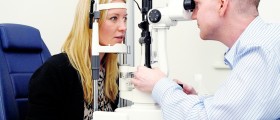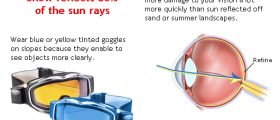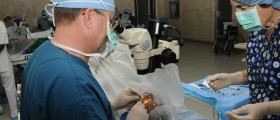
LASIK is a surgical procedure used to correct different vision problems such as myopia, hyperopia, and astigmatism. LASIK is often promoted as a very simple and highly effective procedure that offers a number of advantages over the other methods of vision correction. For example, LASIK provides faster patient recovery, the severe pain is not expected after the surgery, and the vision quality is normally achieved a day following the surgery. However, LASIK, like any other types of surgeries, has certain risks. Not a single medical procedure is risk-free; however, one can minimize the risk of complications by choosing the experienced LASIK surgeon. LASIK is still one of the safest and most effective types of surgery,
but still associated with certain risks, complications and side effects.
Undercorrection and overcorrection
LASIK technique involves the reshaping of the cornea, a semi-transparent part of the eye covering the iris and pupils. The goal is to reshape the cornea in such a way that it works better while focusing the light into the eye. Before the surgery, doctors will make a map of the cornea in order to reshape it properly. However, the patient’s body may respond unexpectedly to the application of the laser, and an undercorrection or overcorrection will occur. This complication is usually temporary, but it can remain permanent in a small number of cases. A slight deviation will not seriously affect the vision, while severe deviations necessitate an enhancement procedure.
Induced Astigmatism
The induced astigmatism occurs in a small number of cases, but it is still possible. Some patients may experience blurred vision following LASIK. If this happens, patient will need an overcorrection or undercorrection retreatment.
Dry Eyes
Dry eyes are a normal postoperative symptom often described as a sensation of grittiness or sandy feeling. This symptom usually goes away after a couple of weeks, up to three months. Patients are advised to use artificial tears to lubricate their eyes and minimize the symptoms. In some rare cases, the symptom may persist for a long time, and doctor will recommend blocking the tear drainage canals with punctal plugs.
Haze
Haze is a cellular reaction that may develop in the corneal stroma after the LASIK. Serious haze occurs in less than one percent of patients. However, haze may be aggravated by the sunlight.
Night Glare and Halos
Glare, halos or starbursts at night are also one of the possible side effects of LASIK surgery. This occurs when the pupil dilates at night and peripheral light rays are scattered more before they reach the retina. Persistent glare and haloes are uncommon, but if they occur, a patient will be advised to wear weak prescription night glasses or use eye drops to reduce the size of the pupils.
Corneal Abrasion
A small corneal abrasion may develop during the LASIK procedure, as a small breakdown in the epithelial surface, if the surface cells do not adhere well. If this occurs, doctors will put a thin bandage contact lens on the eye to improve the healing and comfort.

















Your thoughts on this
Loading...